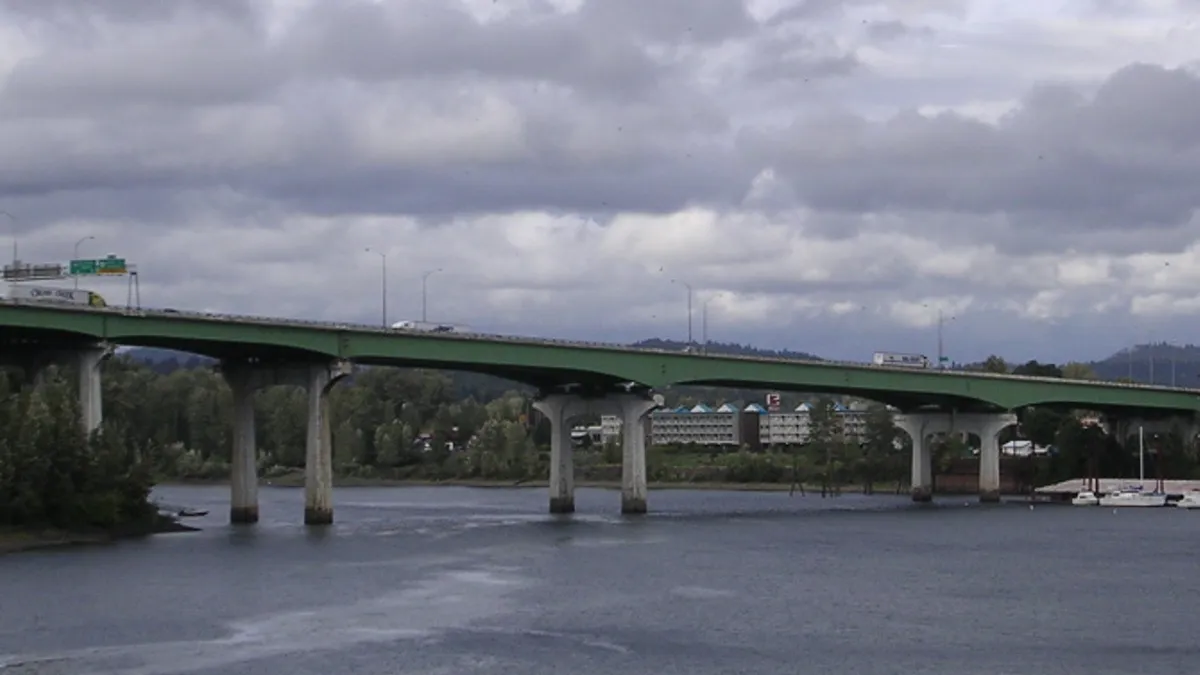Dive Brief:
- The Oregon DOT has announced the three individuals who will lead its new Office of Urban Mobility and Mega Project Delivery. The office's mission is to develop and deliver cutting-edge methods that will relieve traffic congestion for comprehensive congestion relief as directed by the state's Keep Oregon Moving program (HB 2017), which will generate $5.3 billion for transportation by 2024 and then $500 million annually thereafter.
- Brendan Finn, former transportation policy adviser for Oregon Gov. Kate Brown, will join the office as director effective March 1. Longtime ODOT employee and engineer Della Mosier will start as deputy director immediately, and Lucinda Broussard, who has 20 years of experience in both private and public transportation, will start as tolling program manager on Feb. 1.
- ODOT Director Kris Strickler said the establishment of the new office will help provide "equitable access" to transportation for residents across the state, creating new economic opportunities and underscoring the department's commitment to improving mobility in the Portland metro area and beyond.
Dive Insight:
The new office's immediate work will include the following:
Interstate 5 Rose Quarter Improvement Project
- New auxiliary lanes along I-5.
- Safety shoulders for stalled and emergency vehicles.
- Covers where bridges cross over I-5.
- A new overcrossing for all modes of travel and one for pedestrians and bikes.
- Relocation of a highway ramp to reduce accidents caused by the too short distances for merging and weaving.
By March 20, the Oregon Transportation Commission will let the ODOT know if it needs to broaden the scope of the project's environmental study. Meanwhile, cost estimates have jumped from $450 million in 2017 to as much as $795 million.
Interstate 205 Abernethy Bridge Project
- Transform I-205 into a three-lane interstate in each direction from the Columbia River to I-5.
- Provide seismic upgrades for the Abernethy Bridge and all other I-205 bridges within the project in order to provide a safe north-south corridor after a major earthquake.
Another requirement of the Keep Oregon Moving legislation is that the ODOT pursue tolling and congestion pricing as a way to ease congestion. Variable toll rates or congestion pricing, for instance, helps manage traffic flows by charging higher prices during the busiest periods of travel.
Access to public transportation and the mobility it provides has become a top priority for many state DOT's as well as for the federal government.
In 2004, the Coordinating Council on Access and Mobility (CCAM) was established by executive order by President George W. Bush, and its mission is to work toward ensuring better access to transportation for older adults, the disabled and those considered low income — the Section 5310 program. Specifically, the CCAM has b coordinates efforts of the various federal agencies that fund projects and services aimed at these groups.
At the state level, the Wisconsin DOT started the Interagency Council on Transportation Coordination, which, like its federal CCAM counterpart, is responsible for streamlining transportation projects geared toward the aged, poor and disabled. This is a requirement in order to qualify for the Federal Transit Administration's Section 5310 program. The Arizona DOT has adopted a similar coordination plan.














